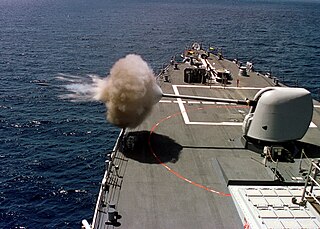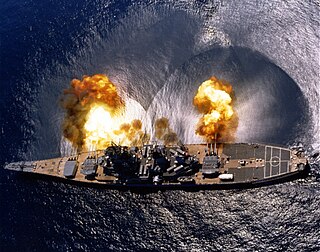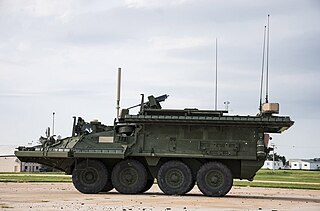
The Defense Advanced Research Projects Agency (DARPA) is a research and development agency of the United States Department of Defense responsible for the development of emerging technologies for use by the military.

The High Mobility Multipurpose Wheeled Vehicle is a family of light, four-wheel drive, military trucks and utility vehicles produced by AM General. It has largely supplanted the roles previously performed by the original jeep, and others such as the Vietnam War-era M151 jeep, the M561 "Gama Goat", their M718A1 and M792 ambulance versions, the Commercial Utility Cargo Vehicle, and other light trucks. Primarily used by the United States military, it is also used by numerous other countries and organizations and even in civilian adaptations. The Humvee saw widespread use in the Gulf War of 1991, where it navigated the treacherous desert terrain; this usage helped to inspire civilian Hummer versions. After going through a replacement process, the Joint Light Tactical Vehicle (JLTV) was chosen as its successor.

The .50 Browning Machine Gun is a .50 in (12.7 mm) caliber firearm cartridge developed for the M2 Browning machine gun in the late 1910s, entering official service in 1921. Under STANAG 4383, it is a standard service cartridge for NATO forces as well as many non-NATO countries. The cartridge itself has been made in many variants: multiple generations of regular ball, tracer, armor-piercing (AP), incendiary, and saboted sub-caliber rounds. The rounds intended for machine guns are made into a continuous belt using metallic links.
Raytheon BBN Technologies was an American research and development company, based next to Fresh Pond in Cambridge, Massachusetts, United States.

The M24 Sniper Weapon System (SWS) is the military and police version of the Remington Model 700 rifle, M24 being the model name assigned by the United States Army after adoption as their standard sniper rifle in 1988. The M24 is referred to as a "weapon system" because it consists of not only a rifle, but also a detachable telescopic sight and other accessories.

A gunshot is a single discharge of a gun, typically a man-portable firearm, producing a visible flash, a powerful and loud shockwave and often chemical gunshot residue. The term can also refer to a ballistic wound caused by such a discharge.
Subsonic ammunition is ammunition designed to operate at velocities below the speed of sound, which at standard conditions is less than 273 m/s (900 ft/s) or Mach 0.80. This avoids the supersonic shockwave or "crack" of a supersonic bullet, which, particularly for suppressed firearms, influences the loudness of the shot.

The Avenger Air Defense System, designated AN/TWQ-1 under the Joint Electronics Type Designation System, is an American self-propelled surface-to-air missile system which provides mobile, short-range air defense protection for ground units against cruise missiles, unmanned aerial vehicles, low-flying fixed-wing aircraft, and helicopters.

Counter-sniper tactics have evolved in sniper warfare to reduce the effectiveness of snipers.

Acoustic location is the use of sound to determine the distance and direction of its source or reflector. Location can be done actively or passively, and can take place in gases, liquids, and in solids.

The HLONS , commonly known as ZEUS, is a solid-state laser weapon which is used by the U.S. military in order to neutralize surface land mines and unexploded ordnance. The ZEUS-HLONS system was a co-operative effort between Sparta Inc and NAVEODTECHDIV to demonstrate that a moderate-power commercial solid state laser (SSL) and beam control system could be integrated onto a Humvee (HMMWV) and used to clear surface mines, improvised explosive devices (IEDs), or unexploded ordnance from supply routes and minefields.

A gunfire locator or gunshot detection system is a system that detects and conveys the location of gunfire or other weapon fire using acoustic, vibration, optical, or potentially other types of sensors, as well as a combination of such sensors. These systems are used by law enforcement, security, military, government offices, schools and businesses to identify the source and, in some cases, the direction of gunfire and/or the type of weapon fired. Most systems possess three main components:

The M1117 Guardian, also denoted Armored Security Vehicle (ASV), is an internal security vehicle based on the V-100 and V-150 Commando series of armored cars. It was developed in the late 1990s for service with the United States Military Police Corps. The first prototypes appeared in February 1997 and serial production of the M1117 commenced between 1999 and early 2000.
EXACTO, an acronym of "Extreme Accuracy Tasked Ordnance", is a sniper rifle firing smart bullets being developed for DARPA by Lockheed Martin and Teledyne Scientific & Imaging in November 2008.

A muzzle blast is an explosive shockwave created at the muzzle of a firearm during shooting. Before a projectile leaves the gun barrel, it obturates the bore and "plugs up" the pressurized gaseous products of the propellant combustion behind it, essentially containing the gases within a closed system as a neutral element in the overall momentum of the system's physics. However, when the projectile exits the barrel, this functional seal is removed and the highly energetic bore gases are suddenly free to exit the muzzle and rapidly expand in the form of a supersonic shockwave, thus creating the muzzle blast.
The Humvee replacement process, undertaken by the U.S. military, was an effort to replace the current AM General Humvee multi-purpose motor vehicle. The Humvee had evolved several times since its introduction in 1984, and is now used in tactical roles for which it was not originally intended. The U.S. military pursued several initiatives to replace it, both in the short and long term. The short-term replacement efforts utilize commercial off-the-shelf (COTS) vehicles, while the long-term efforts focused on building requirements for the Humvee replacement and technology research and evaluation in the form of various prototype vehicles.

Improvised vehicle armour is protective materials added to a mobile platform such as a car, truck, or tank in an irregular and extemporized fashion, using available materials. Typically, improvised armour is added in the field and it was not originally part of the design, an official up-armour kit, nor centrally planned and distributed. Improvised armour is used to protect occupants from small arms, crew-served weapons and artillery fire, and mines. Improvised additions have included metal plate, scrap metal, sandbags, concrete, wood, and, since at least the 2000s, Kevlar. These materials which vary widely in their ballistic protection.

A silencer, also known as a sound suppressor, suppressor or sound moderator, is a muzzle device that reduces the acoustic intensity of the muzzle report and the recoil when a gun is discharged, by modulating the speed and pressure of the propellant gas from the muzzle and hence suppressing the muzzle blast. Like other muzzle devices, a silencer can be a detachable accessory mounted to the muzzle, or an integral part of the barrel.

Iron Curtain is an active protection system (APS) designed by Artis, an American technology development and manufacturing firm. The system is designed to protect military vehicles and other assets by intercepting threats such as rocket-propelled grenades and other shoulder-launched missiles and rendering them inert.
The Armor Survivability Kit (ASK) is an armor kit developed by the U.S. Army Research Laboratory (ARL) in 2003 to protect vehicles like the Humvee from small arms, explosive device fragments, and rocket-propelled grenades (RPGs).















